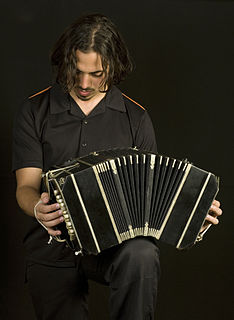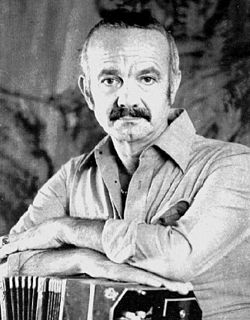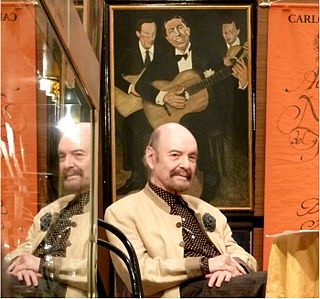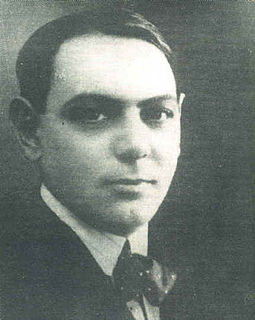
Eduardo Arolas (February 24, 1892 – September 29, 1924) was an Argentine tango bandoneon player, leader and composer.

Argentina, officially the Argentine Republic, is a country located mostly in the southern half of South America. Sharing the bulk of the Southern Cone with Chile to the west, the country is also bordered by Bolivia and Paraguay to the north, Brazil to the northeast, Uruguay and the South Atlantic Ocean to the east, and the Drake Passage to the south. With a mainland area of 2,780,400 km2 (1,073,500 sq mi), Argentina is the eighth-largest country in the world, the fourth largest in the Americas, and the largest Spanish-speaking nation. The sovereign state is subdivided into twenty-three provinces and one autonomous city, Buenos Aires, which is the federal capital of the nation as decided by Congress. The provinces and the capital have their own constitutions, but exist under a federal system. Argentina claims sovereignty over part of Antarctica, the Falkland Islands, and South Georgia and the South Sandwich Islands.

Argentine tango is a musical genre and accompanying social dance originating at the end of the 19th century in the suburbs of Buenos Aires and Montevideo. It typically has a 2
4 or 4
4 rhythmic time signature, and two or three parts repeating in patterns such as ABAB or ABCAC. Its lyrics are marked by nostalgia, sadness, and laments for lost love. The typical orchestra has several melodic instruments and is given a distinctive air by the small button accordion called the bandoneon. It has continued to grow in popularity and spread internationally, adding modern elements without replacing the older ones. Among its leading figures are the singer and songwriter Carlos Gardel and composers/performers Francisco Canaro, Juan D'Arienzo, Carlos Di Sarli, Osvaldo Pugliese, and Ástor Piazzolla.

The bandoneon is a type of concertina particularly popular in Argentina and Uruguay. It is an essential instrument in most tango ensembles from the traditional orquesta típica of the 1910s onwards.
Contents
Arolas first learned to play the guitar before learning the bandoneon which became his instrument of choice. His nickname was El Tigre del bandoneón (the tiger of the bandoneon).
Arolas composed his first tango in 1909 before he could even read or write music. He went on to play with such early masters as Agustín Bardi and Roberto Firpo.
Agustin Bardi was an Argentine Tango pianist, violinist and composer.

Roberto Firpo was an Argentine tango pianist, composer, and leader. Firpo was among the first innovators of the classic tango music genre. He was the creator of the standard tango sextet, and the establisher of the piano in the tango orchestra.
In 1917 Arolas moved to Montevideo where he settled, he played a number of times at the Teatro Casino. From 1920 he resided mainly in Paris where he died alone and alcoholic in 1924.

Montevideo is the capital and largest city of Uruguay. According to the 2011 census, the city proper has a population of 1,319,108 in an area of 201 square kilometres (78 sq mi). The southernmost capital city in the Americas, Montevideo is situated on the southern coast of the country, on the northeastern bank of the Río de la Plata.

Paris is the capital and most populous city of France, with an area of 105 square kilometres and an official estimated population of 2,140,526 residents as of 1 January 2019. Since the 17th century, Paris has been one of Europe's major centres of finance, commerce, fashion, science, and the arts.












